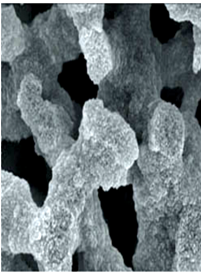Evolution of SIC
4.1.4.
Since the advantages of flow programming highlighted in this Tutorial are so obvious, it is a good question to ask why this concept has not been applied to chromatography prior to the seminal work of Šatínský, Solich, Chocholouš and Karlícek .The reasons are probably both conceptual and technical. While the influence of flow rates on chromatographic separation has been thoroughly investigated long time ago, no thought was given to an idea of varying flow rate within an individual separation run. While HPLC is known as high performance liquid chromatography it is also a high pressure chromatography and here lies the technical obstacle of moving mobile phase reproducibly back and forth at various flow rates at a high pressure.
Therefore what made the concept of SICHROM feasible was the availability of monolithic columns, which offer an acceptable separation efficiency at a low flow resistance. Monolithic columns contain macropores (~2 µm) throughout the entire structure.
The network of macropores gives monoliths a very high degree
of porosity, which translates into low back pressure. The
equivalent macroporous feature in particulate columns is the
interstitial gaps between particles. Since the interstitial
structure cannot attain the same degree of porosity as the
monolithic macropore network, particulate columns generate
higher back pressure. A thorough discussion and an extensive
set of references is provided elsewhere (Cabrera 2008).
The second technical issue was construction of an instrument, which will operate at a higher pressure ( >100 psi) than the ~50 psi limit of the SI instrument on which feasibility of SICHROM concept has been initially confirmed. (Šatínský 2003). Credit for that non-glamorous task goes to Garth Klein who was at that time CEO of FIAlab company.
Šatínský D., Solich P., Chocholouš P., Karlícek R.: Anal. Chim. Acta, 499 (2003) 205-214.
Cabrera K.: LCGC LC Column Technology Supplement, April 2008, p. 32-35
(available through chromatographyonline.com).










